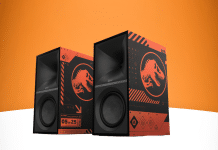
We often hear people complain they are experiencing poor internet connectivity at home or work spaces. There are several factors for bad connectivity, and one of them is not installing the right type of Router. For those few who are not well-versed with routers, it is a physical or virtual internetworking device that is designed to receive, analyze, and forward data packets between computer networks. A router examines a destination IP address of a given data packet, and it uses the headers and forwarding tables to decide the best way to transfer the packets.
Based on a computer’s IP address, a Router operates on the third layer of the OSI model. In order to communicate between two or more networks, it uses protocols like ICMP. Because it can automatically determine the optimum route to transport network packets from the source to the destination, it is sometimes referred to as an “intelligent device.

Types and Options
Wired Routers are also connected to a modem using a cable. But instead of broadcasting the signals, these routers use separate cables to connect to each device like laptops, computers etc. They form a LAN and create wired communication between the devices that are connected to the internet.
Wireless Router directly connects to the modem (a device that brings the internet service provider’s network) using an ethernet cable. It then converts the data packets to radio signals and distributes them through its antennas. They create a Wireless Local Area Network or WLAN to connect multiple devices to a wireless network.
Brouter is a combination of a bridge and a router. It allows transferring the data between networks like a bridge. And like a router, it can also route the data within a network to individual systems. Thus, it combines these two functions of bridge and router by routing some incoming data to the correct systems while transferring the other data to another network.
Core Router is a type of router that can route the data within a network, but it is not able to route the data between the networks. It is a computer communication system device and the backbone of networks, as it helps to link all network devices. It is used by Internet Service Providers (ISPs), and it also provides various types of fast and powerful data communication interfaces.
Edge Router is a lower-capacity device that is placed at the boundary of a network. It allows an internal network to connect with external networks. It is also called an access router. It uses an External BGP (Border Gateway Protocol) to provide connectivity with remote networks over the internet. These Edge Routers are further classified into two types of edge routers in networking: Subscriber Edge Routers and Label Edge Routers
The Subscriber Edge Router belongs to an end-user organization, and it works in a situation where it acts on a border device. The Label Edge Router is used in the boundary of Multiprotocol Label Switching (MPLS) networks. It acts as a gateway between the LAN, WAN, or the internet.
Broadband Routers are mainly used to provide high-speed internet access to computers. It is needed when you connect to the internet through a phone and use voice-over IP technology (VOIP). All broadband routers have the option of three or four Ethernet ports for connecting the laptop and desktop systems. A broadband router is configured and provided by the Internet Service Provider (ISP). It is also known as a broadband modem, asymmetric digital subscriber line (ADSL), or digital subscriber line (DSL) modem.

Important Things To Consider Before Buying
Wi Fi Standards: Routers come in standards like 802.11 a/b/g/n/ac etc. n and ac are the latest standards that offer better data transfer rates. Considering the current Indian data usage trends, experts recommend ac which allows a transfer speed of 1.3 Gbps and enables multiple device connections. However, ac standard Wi-Fi is a little expensive considering they are the latest and most advanced ones in the market. So, n standards are also good and support most of your devices without having to shell out a lot of money.
Wireless Frequency: 2.4GHz and 5GHz refer to the different wavelengths or frequencies of radio signals that routers transmit. The basic difference between the two bands is that 2.4 GHz offers better range and low speed, while 5GHz offers high speed with a low range. If you want your Wi fi to cover a larger area and penetrate through physical obstacles like walls, then 2.4GHz is ideal. For high-speed games and continuous video streaming, 5GHz is better. If you want both, then go for a dual-band Wi-Fi router that allows you to switch from one band to the other, as per your usage.
Speed of the Router: This is a very important aspect to look for in a router. High-speed internet is a must if you have multiple devices that consume a lot of data or stream 4K content etc. The actual speed depends on the service provider, but taking a high-speed router will ensure you have the right hardware to support it.
Antennas and Range: Single antenna routers have a lesser range and are cheaper. Multi antennas are expensive but offer wider coverage and support multi-device connections. A router with more than 2 antennas is ideal for homes and offices with many obstacles like walls and large appliances blocking the signals. The latest innovation in this segment is the router adopts internal antennas to keep an elegant appearance TP-Link WiFi 7 Networking solution offers this feature.
Ports: If you are using the router for small offices or places with multiple devices like printers, go for a device with more LAN ports. Also, check if the router is an RJ 45 port, as it is the ubiquitous data port for network cables offered by most internet service providers.

Market Growth and Prospects
According to TechSci Research report, “India’s Router Market is valued at around USD364.82 million in 2022 and is projected to grow at a CAGR of over 9.91% during the forecast period 2023–2028, owing to factors such as the emerging technology heavily relying on data consumption, which led to an increase in the demand for routers in the market. Emerging technologies such as IoT and cloud computing are driving the growth in the India router market in the forecast period, 2023–2028.
The increasing adoption of connected devices in various sectors has increased the demand for routers. These routers protect unwanted data and accessibility of large files to several machines over the network and improve networking performance. Many market players are introducing a wide range of routers to meet the growing demand in India and worldwide, ensuring that data is reached the specified destination. Furthermore, the increasing demand for routers forces router manufacturers to introduce products at significantly lower prices to stay competitive, resulting in market growth.
Benefits of Router
There are so many benefits of a router, which are given below:
Security: The router provides security, as LANs work in broadcast mode. The information is transmitted over the network and traverses the entire cable system. Although the data is available to each station, the station which is specifically addressed reads the data.
Performance enhancement: It enhances the performance within the individual network. For example, if a network has 14 workstations, and all generate approximately the same volume of traffic. The traffic of 14 workstations runs through the same cable in a single network. But if the network is divided into two sub-networks each with 7 workstations, then a load of traffic is reduced to half. As each of the networks has its own servers and hard disk, so fewer PCs will need the network cabling system.
Reliability: Routers provide reliability. If one network gets down when the server has stopped, or there is a defect in the cable, then the router services, and other networks will not be affected. The routers separate the affected network, whereas the unaffected networks remain connected, without interrupting the work and any data loss.
Networking Range: In networking, a cable is used to connect the devices, but its length cannot exceed 1000 meters. A router can overcome this limitation by performing the function of a repeater (Regenerating the signals). The physical range can be as per the requirement of a particular installation, as long as a router is installed before the maximum cable range exceeds.

ROUTING PROTOCOLS
Routing protocols specify a way for the router to identify other routers on the network and make dynamic decisions to send all network messages. There are several protocols, which are given below:
Open Shortest Path First (OSPF): It is used to calculate the best route for the given packets to reach the destination, as they move via a set of connected networks. It is identified by the Internet Engineering Task Force (IETF) as Interior Gateway Protocol.
Border Gateway Protocol (BGP): It helps manage how packets are routed on the internet via the exchange of information between edge routers. It provides network stability for routers if one internet connection goes down while forwarding the packets, it can adapt to another network connection quickly to send the packets.
Interior Gateway Routing Protocol (IGRP): It specifies how routing information will be exchanged between gateways within an independent network. Then, the other network protocols can use the routing information to determine how transmissions should be routed.
Enhanced Interior Gateway Routing Protocol (EIGRP): In this protocol, if a router is unable to find a path to a destination from the tables, it asks route to its neighbors, and they pass the query to their neighbors until a router has found the path. When the entry of routing table changes in one of the routers, it informs its neighbors only about the changes, but do not send the entire table.
Exterior Gateway Protocol (EGP): It decides how routing information can be exchanged between two neighbor gateway hosts, each of which has its own router. Additionally, it is commonly used to exchange routing table information between hosts on the internet.Routing Information Protocol (RIP): It determines how routers can share information while transferring traffic among connected group of local area networks. The maximum number of hops that can be allowed for RIP is 15, which restricts the size of networks that RIP can support.
We give you the latest update on the brand available in the market:
ASUS ROG Rapture GT-AX6000
The ROG Rapture GT-AX6000 is a high-performance Wi-Fi 6 (802.11ax) gaming router with a striking all-new design. The router lets gamers connect more devices and upgrades their gaming experience to the next level. It is powered by a 2.0 GHz 64-bit quad-core Broadcom CPU and flagship next-gen Broadcom Wi-Fi 6 chipsets that enable it to deliver wireless speeds of up to 6,000 Mbps. The ASUS Aura RGB lighting effects supported GT-AX6000 is an ultimate tool to deliver more bandwidth to more devices, thanks to two 2.5 Gbps Ethernet ports along with WAN and LAN aggregation support.
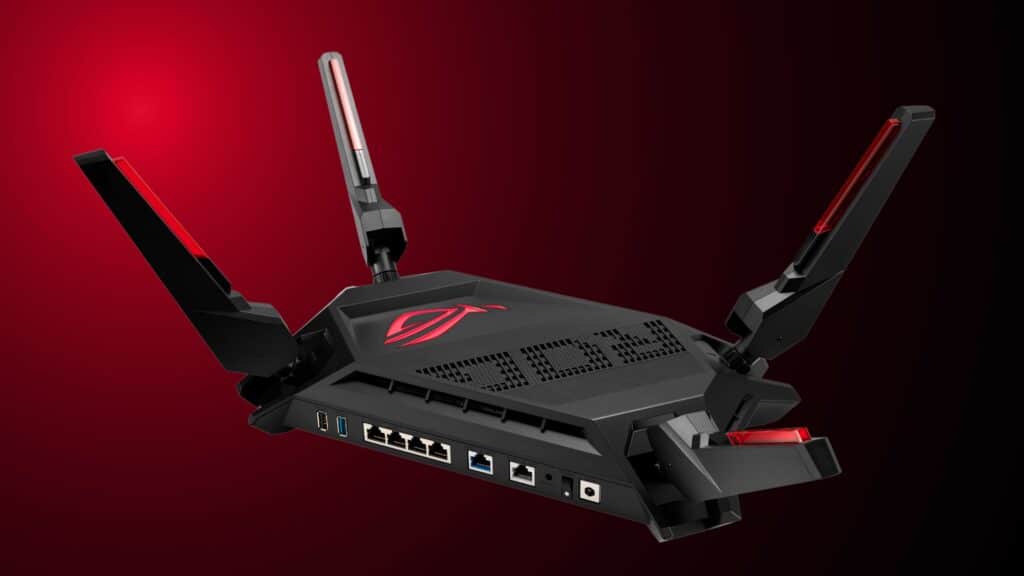
Product Specifications:
- Brand Name: ASUS
- Colour: Black
- Data Transfer Rate: Up to 6000Mbps
- Wireless Type: Wi Fi 6 802.11ax technology
- Number of Antennas External antenna x 4
- Range USP: OFDMA (Orthogonal Frequency Division Multiple Access), Beamforming, 1024-QAM high data rate, 20/40/80/160 MHz bandwidth
Netgear Orbi
Netgear Orbi Whole Home Tri-Band Mesh Wi-Fi 6 System (RBK853) Router with 2 Satellite Extenders provides whole home mesh Wi-Fi coverage up to 7,500 sq ft and 60+ devices. Mesh technology helps you stay connected as you roam around your home using a single network name. You can expand coverage up to 2,500 sq ft with additional satellites. Wi-Fi 6 powers up to 6Gbps of streaming HD video gaming or Internet surfing and downloads. Works with existing Wi-Fi devices and new Wi-Fi 6 devices like iPhone 11, Galaxy Note 10 and Galaxy S10. This range is compatible with any Internet Service Provider up to 2.5 Gbps including cable satellite fiber DSL and more; TRI-BAND BACKHAUL: A dedicated band between your Orbi router and satellite frees up the other two bands for maximum speed to your devices. Plus, it also connects your existing cable modem and sets up and customizes in minutes with the Orbi App – easily manage your Wi-Fi settings at the device and network level by testing your Internet speed viewing speed history, and monitoring data usage.
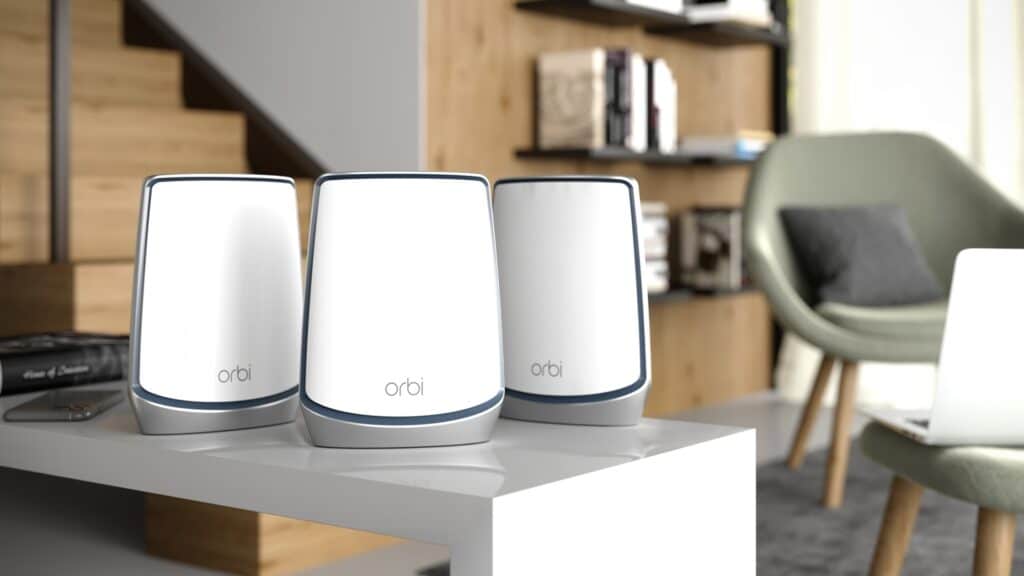
Product Specifications:
- Brand Name: Netgear
- Colour: White
- Control Method: Application
- Data Transfer Rate: 6 Gigabits Per Second
- Wireless Type: 802.11ax, 802.11b, 802.11a, 802.11ac, 802.11g
- Number of Antennas: External antenna x 4
- Range USP: Netgear most popular mesh Wi-Fi solution. Cover up to 7,500 sq. ft. with blazing-fast, powerful Wi-Fi with speeds of up to 6Gbps for over 100 devices. No more dead zones or buffering – just smooth, reliable whole-home Wi-Fi.
TP-Link WiFi 7 Networking Solution
TP-Link Wi-Fi 7 Routers bring unprecedented experience to homes. Archer BE900 has quad-band 24 Gbps Wi-Fi 7 speeds and comes with a brand-new design — totally reimagined from previous routers. They have internal antennas to keep an elegant appearance. 12× optimally positioned internal antennas to achieve the effects of high gain, high isolation, high integration, and multidirectional coverage.
The world’s first quad-band Wi-Fi 7 router with blazing-fast Wi-Fi speeds of up to 24 Gbps. Two 5 GHz bands ensure more devices enjoy high-speed Wi-Fi. The brand-new 6 GHz band provides exceptional bandwidth and congestion-free channels exclusive to your devices. As for the Wi-Fi 7 gaming router, GE800 provides abundant game acceleration functions and the latest Wi-Fi 7 technology for gamers. Three models are available in the Deco Whole Home Mesh Wi-Fi 7 System, from BE33000 to BE11000, providing a true whole home multi-gig mesh Wi-Fi. For enterprise Wi-Fi 7, Omada EAP780 and 770 will be available, covering from BE22000 to BE11000.

Product Specifications:
- Brand Name: TP-Link
- Colour: Black and Silver
- Speed: Quad-band Wi-Fi 7 with 24 Gbps speed
- Number of Antennas: Inbuilt antennas not visible
- Range USP: The world’s first quad-band Wi-Fi 7
D-Link ‘EAGLE PRO AI series
D-Link has recently introduced ‘EAGLE PRO AI series’ router in India. ‘EAGLE PRO AI’ series includes R03 and R04 (Wi-Fi 4 Router), R12 (Wi-Fi 5 Router), and M15 and R15 (Wi-Fi 6 Router). Most home Wi-Fi customers are unaware of the fact that router serves as their internet gateway. As a result, it’s critical to invest in a router that can handle all their modern Smart Home requirements. The EAGLE PRO AI series is built to accomplish just that, with some amazing capabilities for today’s Smart Home users: AI Parental control lets parent designate online hours, restrict website access etc; The AI Wi-Fi Optimizer continuously scans and monitors the network to keep users connected to the best and cleanest Wi-Fi channels; AI Traffic Optimizer automatically allocates bandwidth to different applications for the best connectivity. It informs users which activities are causing congestion and allows them to de-prioritize.
The EAGLE PRO AI App features an embedded SpeedTest to check Internet speed and an exclusive Health Mode function allowing households to schedule internet access, keeping family members offline during specific times to maintain a balanced family lifestyle, and turn Off Wi-Fi entirely to conserve energy.
AI Assistant feature in the EAGLE PRO AI APP collects internet performance information over time and then sends a detailed report. This allows users to intelligently monitor network usage with simple actionable recommendations to keep network performance at peak for everyone in the family.
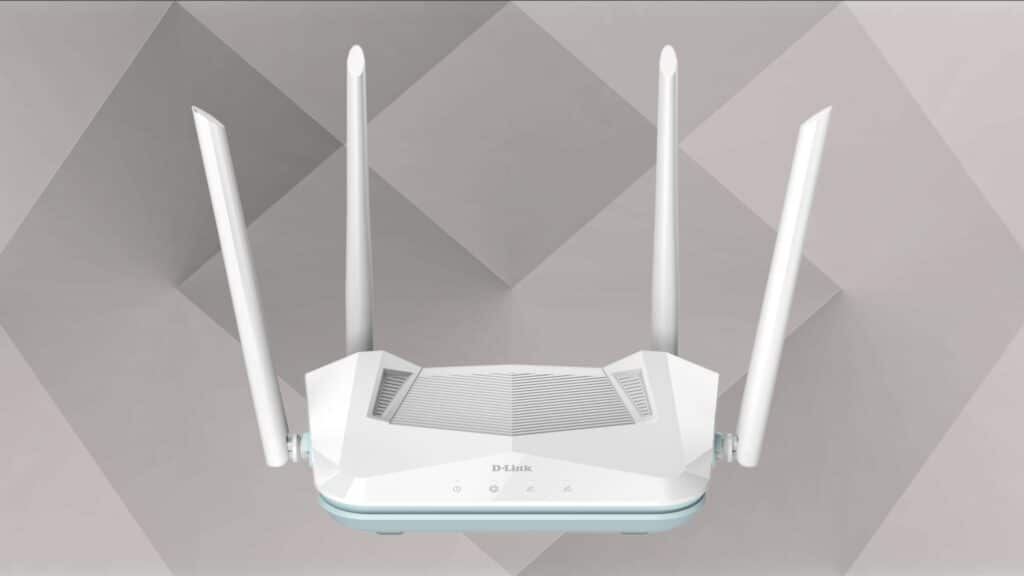
- Brand: D-Link R12: AC1200 Smart Router
- Speed: Up to 867Mbps (5GHz) and 300Mbps (2.4GHz) Speeds.
- USP: EAGLE PRO AI features including; AI Wi-Fi Optimizer; AI Traffic Optimizer; AI Parental Controls and AI Assistant
Mi Router 4A Gigabit Edition
Mi Router 4A Gigabit Edition is a slim white body that differentiates clearly, with four high-gain antennas that are capable of high transmission. On top is a Mi logo and LEDs to indicate connection status. At the back is a one gigabit WAN port and two gigabit LAN ports. In terms of core specs, the router comes powered by a dual-core MT7621A MIPS CPU that offers 4 omnidirectional antennas with 128MB memory. It’s rated for theoretical data speeds of up to 1,167Mbps which supports dual-band Wi-Fi too.
It can be controlled through Mi Wi-Fi App. There’s a built-in firewall that can be enabled via the App, and you can update the router’s firmware too. One of the most useful features is one-tap Wi-Fi optimization – it optimizes the Wi-Fi network automatically for the best possible interference, and device-level control. The integrated signal amplifier ensures a good Wi-Fi signal with wide coverage even through walls. The integrated power amplifier enhances signal transmission power, while the low noise amplifier improves signal reception sensitivity. The real benefit of this router becomes apparent when you connect multiple devices at once, you can connect up to 128 devices to the Mi Router 4A Gigabit Edition.
To keep the router cool, Xiaomi has used aluminum-magnesium alloy heat sinks, high-conductivity thermal paste, and large vents at the bottom.
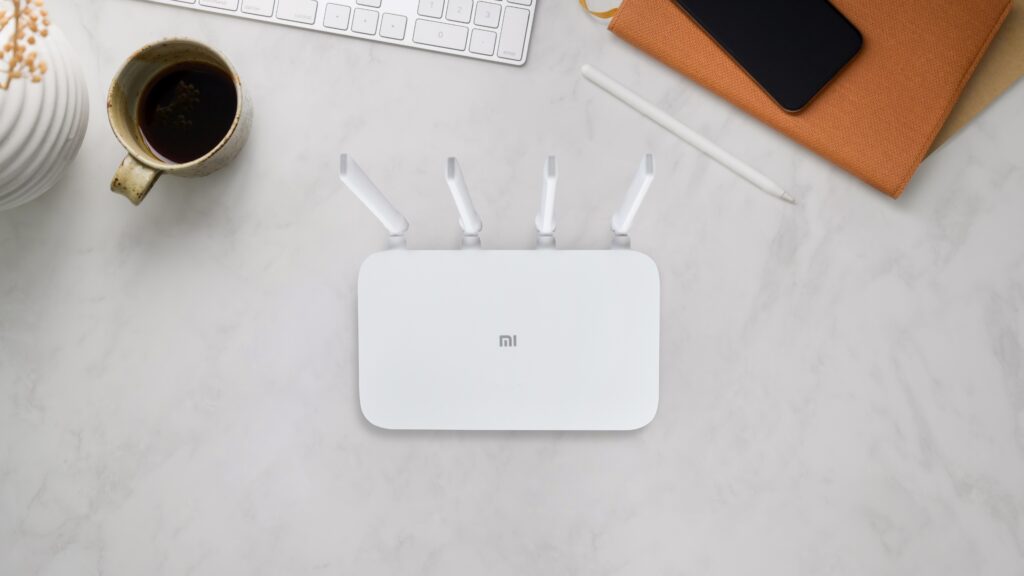
Product Specifications:
- Brand Name: Mi Router 4A Gigabit Edition
- Colour: White
- Control Method: Internet Connection
- Data Transfer Rate: Up to ~1200Mbps*
- Wireless Type: Wifi
- Number of Antennas: 4
- Range USP: Dual-band WiFi 2.4GHz 5GHz
Whether it is a sleek design, speed, compatibility with Apps or the latest AI features, we have updated you on all. Now it is up to you to make the right choice.








